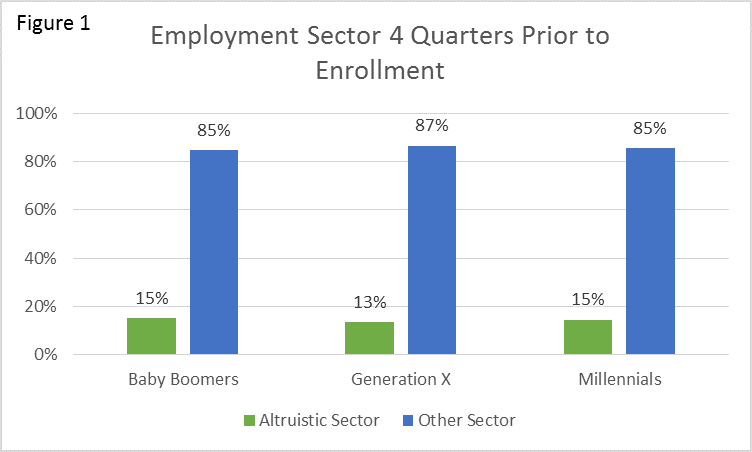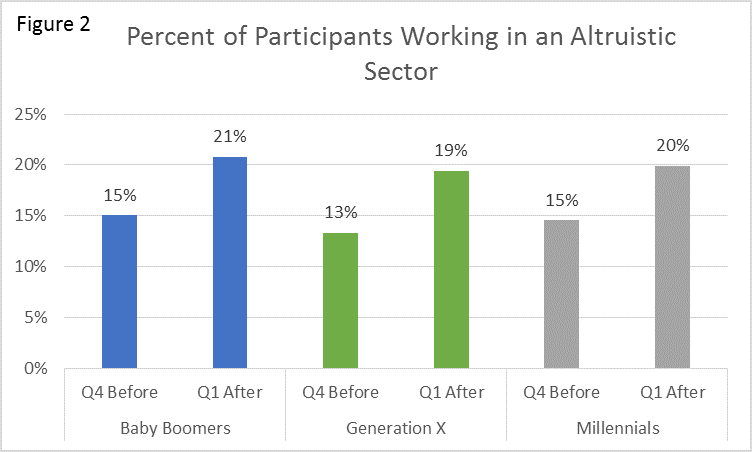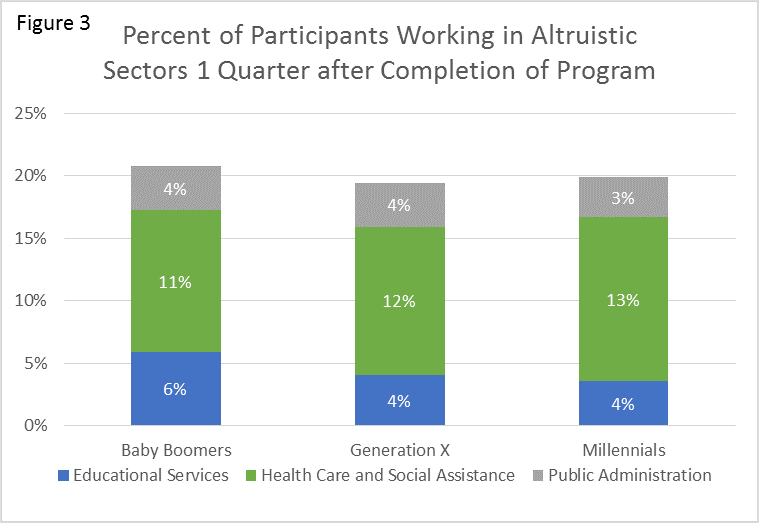Having overtaken boomers, they're now Minnesota's largest group of workers
8/24/2017 3:00:00 PM
Millennials have overtaken baby boomers as Minnesota’s largest group of workers.
As of the summer of 2017, most millennials have either entered the workforce or will be entering soon. (Although definitions vary, in this research, millennials are individuals born between 1982 and 1997. Generation X are individuals born between 1963 and 1981. Baby boomers were born between 1942 and 1962.) While millennials enter the workforce or continue to advance their careers, many employers are questioning their work values. Despite being characterized as lazy, entitled, disloyal, and high maintenance, millennials have received less criticism and some defense in the last couple of years. Millennials are beginning to be recognized for their positive work values, specifically for their desire to change other’s lives through their work.
The legitimacy of this stereotype, however, is brought into question as many other stereotypes about millennials in the workplace lack evidence or have been disproven. For example, despite popular belief, millennials are not job hopping any faster than other generations. The PEW Research Center found that the job tenure of millennials is no less than Generation X. In fact, millennials had a higher share of their population with 13 or more months of tenure (63.4 percent) in 2016 than Generation X (59.9 percent) did in 2000. Millennials and Generation X both had about 22 percent of their populations employed for five or more years in 2016 and 2000, respectively.
The altruistic, or unselfish, work stereotype about millennials is also questioned by researchers. Twenge et al. (2010) find that only about 44 percent of millennials want a job that provides an opportunity to directly help others. A higher percentage of millennials instead value things like an opportunity for promotion (56 percent) and interesting work material (82 percent). Hansen and Leuty (2011) do not find any statistically significant differences in the importance of altruistic work across generations. The desire for altruistic work appears to be similar to that of previous generations.
Due to the false nature of other stereotypes of millennials in the workplace, we decided to test if millennials truly aspire for altruistic work more than previous generations. If true, this stereotype should be reflected in the number of millennials in altruistic sectors. The three industry sectors that stick out as altruistic are educational services, health care and social assistance, and public administration. While other sectors can be framed as occupations which help others, it is the selfless nature of these three sectors, and the employees, that make them particularly altruistic.
Buurman et al. (2012) find evidence of public sector workers engaging in more altruistic actions, like volunteering, than their private sector counterparts. This finding solidifies public administration as an altruistic sector. In addition, nearly one-third of educational service establishments (K-12 schools) are in the public sector, solidifying it as the second most altruistic sector of employment. As outlined by Burks and Kobus (2012) the existence of altruism in the health care sector in not debated. Instead, the debate surrounds whether or not health care professionals should use altruism as their motivation for practicing.

The Dislocated Worker Program works with participants to help them find employment after a layoff, and provides a useful dataset for this research. The composition of the Dislocated Worker Program is representative of the Minnesota workforce. We can use administrative data to see which sectors workers were employed prior to their entry into the program. Each generational group had about 14 percent of their participating population working in an altruistic sector one year before their enrollment into the Dislocated Worker Program (Figure 1). Baby boomers had the highest share of participants working in an altruistic sector.

As a whole, all three generational groups saw a significant shift to altruistic work after completion of the Dislocated Worker Program. Millennials, baby boomers, and Generation X all saw about 20 percent of the program participants land in altruistic sectors in the first quarter after program completion (Figure 2). Placement into the three sectors under the altruistic umbrella varied. Millennials are working in health care and social assistance more often than Generation X and baby boomers. Baby boomers are working in educational services more often than Generation X and millennials. All three generational groups have about 3 to 4 percent of their participants exiting into the public administration sector after completing the program (Figure 3).

These findings should be taken with a grain of salt, as this research only looks at Dislocated Worker Program participants. In addition, age may have an influence over a worker’s likelihood to seek out altruistic work. This may be due to an increased desire for altruistic work as you age. It may be that older individuals have access to more altruistic occupations because of their greater experience and education, as many of these jobs require study beyond a bachelor’s degree.
Millennials appear to be entering the altruistic sectors at about the same rate as previous generations. However, it is clear that participants in the Dislocated Worker Program seek altruistic work across generations relatively equally. Altruistic work appeals to some, but many people are not willing to sacrifice factors like wage, benefits, and developmental opportunity to take a job that makes them feel good about themselves. Even though other sectors may not offer as many altruistic work opportunities, every occupation offers the opportunity for meaningful work and a feeling of achievement and/or satisfaction depending on perspective.
John Stevens is a student at Saint John’s University in Collegeville, Minn and a former intern with the Performance Management team at DEED.
workforce